Published 25/08/2023
The technicolor dazzle of Andy Warhol's Campbell Soup Cans, the iconic explosive renditions in Roy Lichtenstein’s comic-inspired paintings and the amusing colossal replicas of Claes Oldenburg's everyday objects - how can one not be intrigued by the audacious world of Pop Art ?
This revolutionizing movement burst onto the scene mid-20th century, bringing an energetic celebration of popular culture into the artistic realm. Surprising, vibrant and thought-provoking, let me guide you on a journey through pop art's rich history, trailblazing artists and its pulsating influence that resonates even today.
View our selection of Pop Art works.
Definition and Explanation of Pop Art
What is pop art? The term 'pop art' refers to a popular-art style known for bold images, bright colors and commercial themes. Born in 1950s Britain before crossing over the Atlantic to America in the 1960s, this unique form of artistic interpretation became renowned as it draws inspiration from popular culture and media such as advertising, television, music and consumer goods.
Conceptually driven rather than stylistically delineated, this new wave distinctly neutralized fine art’s elitist tendencies by collapsing boundaries between high arts and low-brow elements. The ‘art of pop’, if you may call it that way, bridged seemingly contrasting concepts resulting in relatable pieces which both entertained and challenged viewers.
Historical Context and Influences on Pop Art
Understanding why was pop art important necessitates our step back into time when society was rapidly transforming due mainly to post-war urbanization and America's booming consumer culture spurred by economic prosperity. In response to these stark societal changes arose a collective need for innovation amongst curious minds that led to birth of the pop art movement.
Indeed influences on the pop art movement were multiple: From Dadaism - famous for ridiculing materialistic attitudes post-World War I - to aspects of Surrealism and Cubism impacting the movement’s incorporation of everyday objects, offering new perspectives. Furthermore, burgeoning technological trends especially within the advertising industry also played an instrumental role as popart tapped into techniques such as screen-printing thus enabling larger scaled production while emphasizing its mass-market aesthetics.
Simultaneously, this explosive era saw popular culture thriving like never before; Hollywood glamor and Rock n Roll gripped the masses which made their way effortlessly into pop art's style commemorating these freshly minted icons of popular culture. Even today these facts on pop art vividly highlight the genre's forward-thinking spirit which aimed to democratize art by integrating it within society's mainstream fabric rather than personifying its traditional aloof persona.
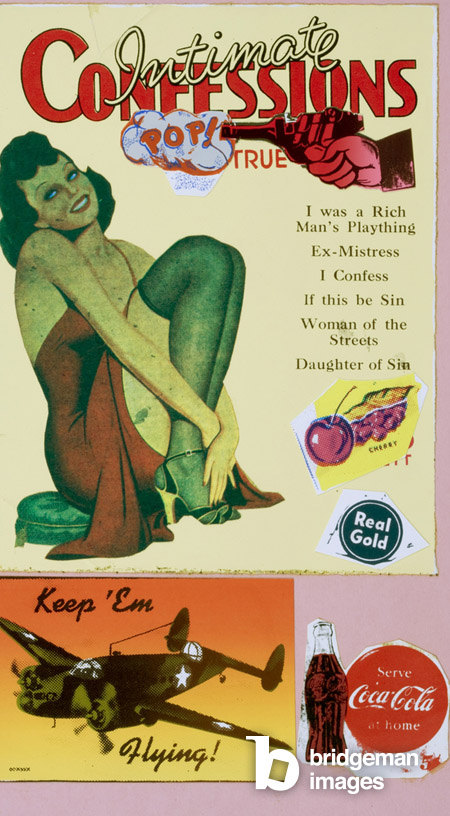
Origins of Pop Art
Before we delve into the core of pop art, it's useful to consider its roots and the factors that influenced its birth.
Predecessors to Pop Art Movement
The stage for pop art was set by movements like Dadaism, which emerged in Europe during the horror-filled years of World War I. Artists in this movement rejected reason and logic, embracing chaos and irrationality instead – a clear departure from conventional artistic values at the time.
Later came Surrealism, with its dreamlike explorations and unexpected juxtapositions, blurring lines between reality and imagination. Marcel Duchamp stood out as a major figure here; his "readymades" sparked debate about what should be considered art – like his infamous urinal exhibited as 'Fountain' in 1917.
In America, Abstract Expressionism heralded an emphasis on spontaneous, automatic or subconscious creation - radically different to pop art's fascination with mass culture and imagery. However, both shared the common aim to break away from established norms in their respective periods.
These movements brought concepts like appropriating everyday objects into high art (Duchamp) or placing importance on conceptual meaning over technical skill (Abstract Expressionists). These ultimately paved the way for pop artists to further dissolve barriers separating 'low' popular culture arts from 'high' serious culture.
Now let me take you across the Atlantic Ocean to Britain where another key influence played out: The Independent Group.
The Independent Group and its Role in the Emergence of Pop Art in Britain
Formed in 1952 at London’s Institute of Contemporary Arts (ICA), The Independent Group consisted mainly of young visual artists, writers, architects enthralled by American mass culture—its movies, comic books, adverts—all viewed as provocative symbols of new consumer society taking hold after World War II devastation. This influential collective is often credited with originating what are pop artist philosophies — most notably appropriating and recontextualizing images from popular culture.
Prominent members included artists like Richard Hamilton, whose 1956 work "Just what is it that makes today's homes so different, so appealing?" is considered the first iconic representation of pop art movement. Adopting a collage style, he used images cut from American magazines to satirize modern consumer culture riddled with sexual and technological innuendos—an unprecedented approach that influenced the style of pop art globally.
The Independent Group's focus on mass media images reinforced a notable aspect of the time—the democratization of art through its accessibility and appeal to mainstream audiences. By integrating elements from within this cultural shift into their works, they effectively challenged existing notions about hierarchy in arts while setting foundations for the development of pop art later in the 1950s to 60s. They truly embodied why was pop art important: as an anguished response to then shifting societal values and changing perceptions on what defines high quality 'art'.
Their impact still echoes today – every time you see Andy Warhol’s soup cans or Roy Lichtenstein’s comic strip paintings, remember it all started with a group of British mavericks challenging conventional wisdom about what could be considered immortal 'Art'.
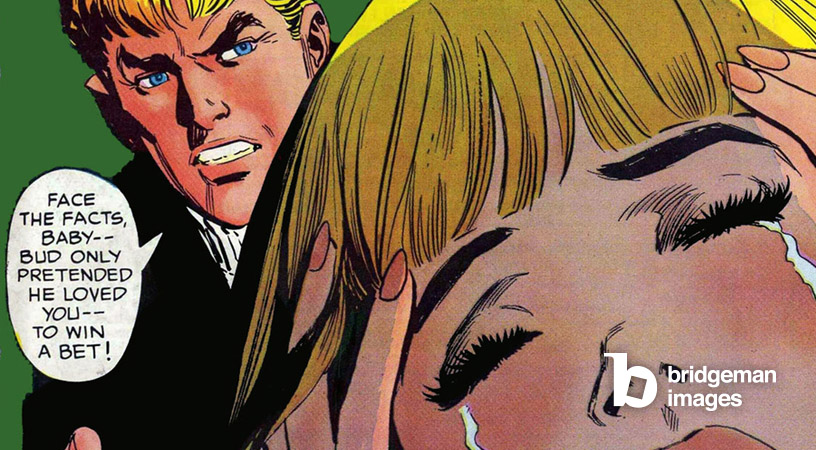
Major Artists and Artworks of Pop Art
Pop art was a revolutionary movement that unapologetically drew inspiration from popular culture. The pop art movement artists used this approach to challenge traditional fine art concepts and blur the lines between what mainstream society deemed as ‘high art’ and ‘low art’. Three artists stand tall among their peers: Andy Warhol, Roy Lichtenstein, and Claes Oldenburg.
Andy Warhol and his Iconic Campbell's Soup Cans
Undisputedly one of the leading figures in the popart scene, American artist Andy Warhol is often credited with propelling this style of pop art into the limelight. His signature technique, a blend of commercialism with visual elements taken straight from everyday life, resulted in some monumental pieces of artwork.
Perhaps none more iconic than his depiction of "Campbell's Soup Cans." This series features 32 canvases, each showcasing one different variety of Campbell's soup from that era. The repetitive imagery mirrored consumer goods' mass production and triggered conversations about American consumerist culture.
Roy Lichtenstein and his Comic-Inspired Paintings
Next up in our exploration is Roy Lichtenstein, another pioneering figure within the pop art movement. Drawing heavily from popular sources like comic strips or advertising imagery for his work, Lichtenstein brought a new narrative dynamic into high-stakes visual arts. Marrying both parody and admiration for modern consumerism, he created visually striking compositions featuring highly stylized graphic illustrations – all complete with word bubbles or sound-effect notations typical to comics.
A fitting example is "Drowning Girl," embodying striking color contrasts underpinning dramatic narratives set in absurdity – making it easy to see why influenced the direction of 'how to do pop art'.
Claes Oldenburg and his Sculptures of Everyday Objects
Last but by no means least on our inspiring listing is Claes Oldenburg, whose enduring contribution to the art of pop was a distinct mash-up between sculpture and everyday objects. This Swedish-born American artist elevated common things seen around into huge sculptures that challenged perception about public art.
Gifted with an uncanny ability to infuse playfulness into ordinary pieces like clothespins, hamburgers, or typewriters through gargantuan proportions – his versatility and ingenuity as an artist in pop art cannot be understated.
A notable creation is "Spoonbridge and Cherry" - a massive aluminum structure sitting perfectly on a placid pond at Minneapolis’s Sculpture Garden. The humor seeps out from this larger-than-life culinary combo, making it an irresistible sight for all passers-by.
These artists not only added depth to the palette of cultural significance but also helped shape the narrative of pop art 1980s onwards till today's vibrant scene globally transcending borders and cultures alike. As such, their influence continues to ripple across contemporary creation space today as new forms of artistic expression emerge.
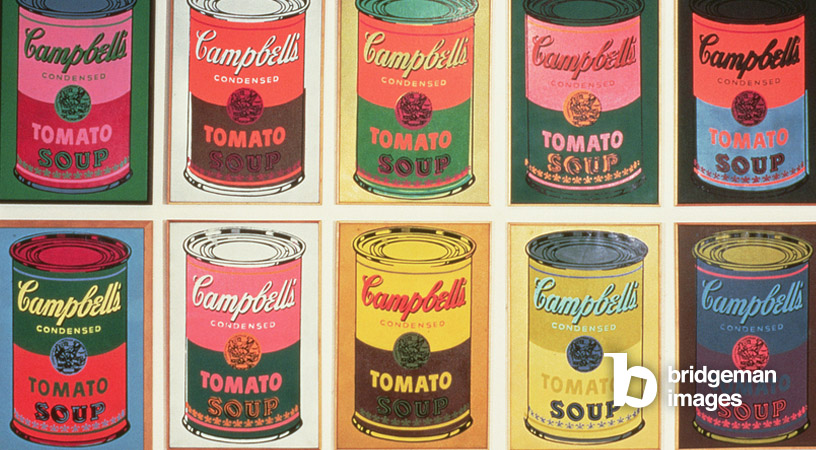
Decidedly Provocative Art
Key Themes and Concepts in Pop Art
Unraveling the key themes and concepts of pop art gives invaluable insight into what motivated the artists and how they channeled their perspectives to create impactful images. Two critical components—critique of consumer culture and popular culture as inspiration—capture the essence of this movement.
Critique of Consumer Culture
One major theme that artistically echoed throughout the arena of pop art was a critique of consumer culture. The post-war era, particularly in America raised significant changes in society—people living a life facilitated by mass production and conspicuous consumption.
Pop art sought to reflect these social dynamics, often highlighting elements from advertising, comic strips, product packaging—components intrinsically tied to consumerism—in their works. A clear example is Andy Warhol's iconic Campbell's Soup Cans series which captures this theme beautifully.
Witnessing people buying similar products showcased on television or magazines urged pop artists to embed these traits within their artwork intriguingly. Their purpose might not have been explicit criticism but an effort to hold a mirror up to society revealing it for what it had become—a machine driven by unprecedented waves of commercialization and consumerism.
In doing so, artists infusing this critique made a deliberate attempt at eroding the distinction between high art (typically associated with profundity) and low-brow popular culture objectified through material goods like cans of soup.
Popular Culture as Inspiration
Inspiration was harvested heavily from everyday reality by the creators of pop art. What set them apart from traditional artists was their remarkable ability to find value in mundane objects commonly overlooked otherwise.
Indeed, popular culture served as a meaningful muse steering behind every painting or sculpture fashioned. Music idols such as Elvis Presley became subjects rendered powerfully onto canvases reflecting society’s obsession with celebrity culture.
Similarly inspired scenes taken straight out of comic books emerged remarkably under Roy Lichtenstein’s brush strokes—thus everyday elements of popular culture became high art. This theme worked to challenge established notions about the inherent seriousness or loftiness that art was traditionally associated with.
Consequently, these artists broke down rigid walls in their pursuit, giving a broader definition to art and augmenting its reach. The interaction between pop culture and pop art remains as profound today—more interactive and responsive than ever—voicing societal sentiments through ingenious visual expressions.
In essence, the approach towards consumerism critique coupled with finding inspiration in popular culture reveals some intriguing facets behind the evocative world of pop art and what propelled the artists to represent these dynamics so distinctively. It's rather extraordinary how they choose to interpret, present and even satirize aspects that were clearly salient themes amidst their time—making this artistic pursuit a vital cultural commentary shimmered with resilient creativeness
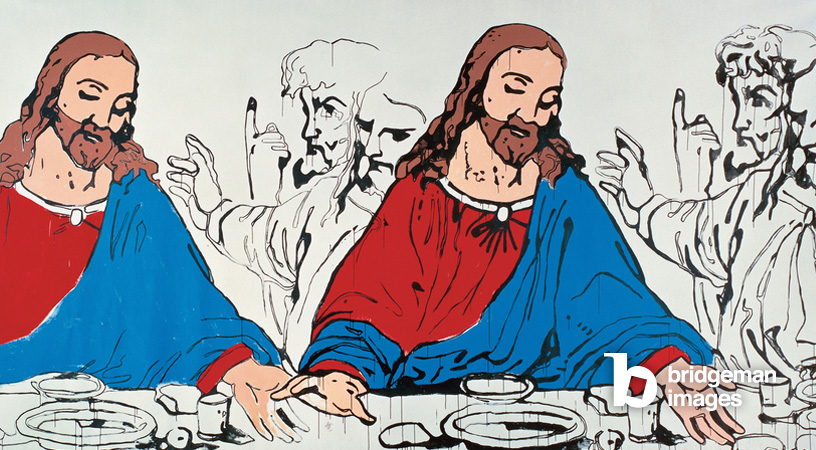
Pop Art's Impact and Legacy
Pop art has proven to be an influential force since its inception in the mid-20th century. It breached the once seemingly insurmountable walls between high art and popular culture, altering our perception of art forever.
Influence on Contemporary Art and Culture
The boundary-pushing elements of pop art have nurtured the spirit of rebellion and non-conformity that defines much of contemporary art. The use of everyday objects or popular imagery as artistic fodder, a trademark technique of artists in pop art, opened up boundless opportunities for creative expression.
Several present-day movements owe their genesis to pop art:
- Conceptual Art: Pop art helped pave the way for this genre where the idea behind the work surpasses its aesthetic value.
- Street Art: This revolutionary form borrowed heavily from pop-art by employing vibrant colors and addressing themes around contemporary urban life.
- Digital Art: The simplicity and replicability that marked works by Warhol urged artists to explore technology-driven methodologies—an attitude mirrored in digital forms today.
Culturally-speaking, there is evidence galore demonstrating how deep-seated popart remains within current imagination. From music album covers employing style of pop art aesthetics to fashion designs emulating iconic pieces—pop art's enduring influence is palpable everywhere.
Continued Relevance and Interpretation of Pop Art Today
Although specific circumstances surrounding the origin of pop art (such as post-war consumerism) are historical, many prevalent themes continue to resonate with us today. A glance at modern graphic design, advertising, or even emojis reveals traces of what influenced the pop art movement half a century earlier—wide-spread gaiety offset subtly with critiques on society.
Artists continue to reflect back realities using a striking palette—a cue taken straight from their 1950s predecessors' playbook.-Andy Warhol’s analogy stands true till date; just as no one can confidently articulate why a can of Campbell’s soup is iconic, it's equally confounding why certain visuals become symbolic tokens of our era.
Pop art's ability to capture, comment, and even predict societal changes ensures its standing as a critical chapter in the annals of artistic evolution; one that remains open for reinterpretation and exploration even today. We see new life breathed into pop art through contemporary installations or music videos echoing 'art of pop' aesthetics—a testament to its lasting relevance.
To conclude then, the contribution and impact of the pop art movement on current visual culture cannot be overstated. It hasn't just seeped into every imaginable corner; rather, it continues inspiring us to observe from novel vantage points, spawning fresh narratives while always retaining elements of fun—much in line with how it all began.
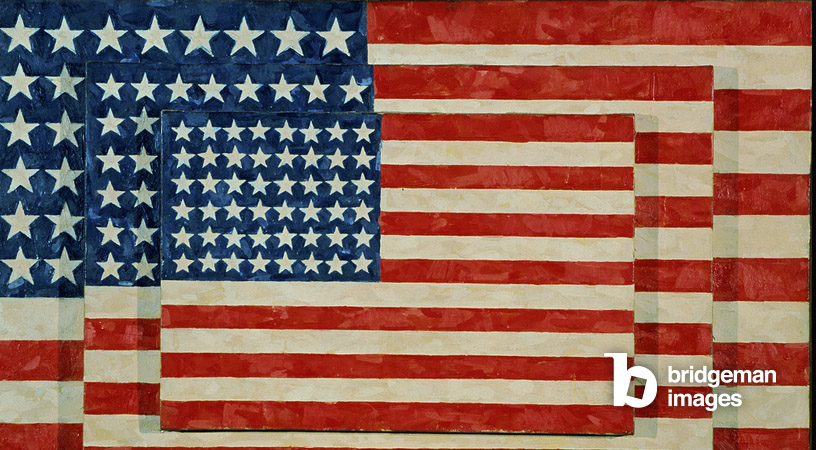
Conclusion
As our exploration of the pop art movement comes to an end, it's imperative to acknowledge its pervasive influence on contemporary art and culture. Emerging in the 1950s and '60s, pop art brought a dramatic shift in traditional artistic paradigms with its embrace of popular culture and everyday consumer items.
A monumental figure such as Andy Warhol became synonymous with this vibrant style of pop art. His iconic Campbell’s Soup Cans truly epitomized the bold imagery, bright colors, and commercial themes that defined this innovative movement. Equally groundbreaking were artists like Roy Lichtenstein with his comic-inspired paintings and Claes Oldenburg's sculptures celebrating mundane objects.
Given its roots in broadening artistic horizons beyond highbrow topics to embrace fads, advertising, and mundane consumer goods – there is little surprise to how ubiquitous the impact of Pop Art has been upon subsequent generations of artists, designers, photographers (and so much more). By straddling low culture popular pursuits with high culture fine arts significance - think Jasper Johns' Interpretations or James Rosenquist's genre-twisting work - Pop Art forever altered what was considered worthy inspiration for artistry.
It is also vital to note that while pop art has historical beginnings rooted in the mid-20th century, its relevance remains unclouded even today. Modern artists frequently look back towards pioneers like Warhol or Lichtenstein for inspiration while carving their own footprints within this charismatic domain.
The instantaneous recognition factor tied with vivid aesthetics has cemented pop art as a crucial strand in both mainstream creative output as well as modern commercial endeavors, more than half a century after it first erupted onto our cultural scene.
In speckled patterns across countless industries - from fashion trends evoking Lichtenstein-like polka dots to Warhol-esque inspirations becoming recurring motifs across various design sectors - Pop Art continues its paradoxical tradition of simultaneously critiquing and adoring consumer culture.
By inviting us to view the everyday anew, pop art breaks ordinary boundaries and expands our aesthetic horizons, proving that it was indeed a movement ahead of its time (and is very much still relevant today). And by always surprising us with its playful integration between high art and popular taste, this extraordinary artistic movement ensures we never lose sight of why pop art was so important.
It embodies, at its core, a vivid celebration of the colorful tapestry of human life - demonstrating that truly, anything ('pop' or not) can be rendered into an engaging piece of expressive art.
References
When researching the fascinating world of Pop Art, I relied on several essential sources. To verify facts and locate detailed information, here's a sampling from my treasure trove:
- McShine, Kynaston (1989). "The Andy Warhol Museum". The New York Times. McShine provided an intimate portrait of perhaps the most renowned pop art movement artist - Andy Warhol.
- Alloway, Lawrence(1966). "Topics in American Art since 1945".W.W Norton Company Inc., This work offered a substantial exploration of American pop art and its influences.
- Livingstone, Marco (1990).Pop Art: A Continuing History, Thames & Hudson. This book traced the origin of pop art through its various evolutionary stages and transformations.
- Osterwold, Tilman(2003).Pop Art Taschen GmbH.It is definitely worth checking out for anyone truly interested in what influenced the Pop Art movement and when did Pop Art happen.
- Prokopoff, Stephen (1988). “Roy Lichtenstein: Interiors.” Illinois State University. Provided invaluable insights into Roy Lichtenstein’s Comic-Inspired Paintings.
- Bateman, Fiona (2011).“British Pop.” Museum Ludwig Cologne.,Bateman gave insights into how The Independent Group paved way for British Pop Art.
- Marquis Who’s Who (2001).“Claes Oldenburg”.Life Time Achievement.This focussed on Claes Oldenburg's concept behind his everyday objects sculpture which carved niche for itself in style of pop art .
Ensuring accuracy while striving to bring to life intriguing aspects of our shared cultural history is paramount to me! Feel free to broaden your understanding by venturing into these references directly – who knows what further journey they may lead you on?
View our selection of Pop Art works.
Get in touch with our team; we are always happy to assist you with your research.


